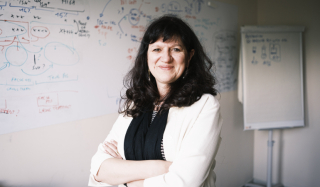
CoWallonia, launched in 2012, is the network of Walloon coworking spaces initially developed as part of the Creative Wallonia programme. Until three years ago, the "coworking movement" was still relatively unknown in Wallonia. Today, it is increasingly attracting the interest of Walloon entrepreneurs and even setting an example for other European countries.
CoWallonia is coordinated by the Agence du Numérique and currently has 21 coworking spaces (Coworking Namur, GreenLab Arlon, Switch Coworking Charleroi, etc.) with a total capacity of 550 places. Its development is also supported by the digital strategy for Wallonia, Digital Wallonia.
The coworking spaces in Louvain-la-Neuve, Namur, Charleroi, Mons, Tournai, La Louvière, Liège and Seraing were created using 150,000 euros granted by Wallonia, in 2011, over a period of 3 years. A second call for projects, launched in 2017, received subsidies of 100,000 euros to open spaces in Frasnes-lez-Anvaing, Saint-Hubert and Marche-en-Famenne. The condition was that these projects be led by a local authority.
Six hundred people in Wallonia already use this way of working, which is considered the "workspace of the future". The latest survey, conducted in 2018, found a user satisfaction rate of 4.3 out of 5, with a 100% recommendation rate. This high rate can also be explained by the fact that it offers the possibility of working from home, which is a way of saving kilometres. "Teleworking now saves 9.3 million kilometres a day," explained Benoît Minet, mobility advisor at the Walloon Business Union, "and if we can get 42% of the working population practising teleworking, it would save 23 million kilometres. These figures should be taken with caution, but they give us a major trend."
According to the latest CoWallonia study (2018), covering only the eight urban areas and six of the 13 semi-rural areas, 53% of self-employed people use these spaces, amounting to 18% of employees. The average age is 39, with 42% women. 38% of community members attend one day a week and 30% attend full time. 34% of them have been there for less than a year, while 11% have been there for more than five years.
Source : le Soir







